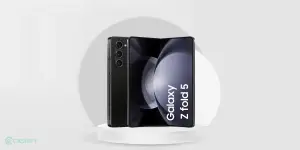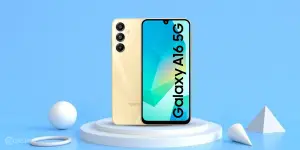Exynos 1330 and Snapdragon 4 Gen 2 are the two powerful processors that entered the battle of smartphone processors: If you are confused about choosing between the two, then, in this article, let’s take a closer look at what makes one supersede the other. Furthermore, we will also study the secrets behind their speedy chips!
Also Read: Dimensity 9000 Vs Snapdragon 8 Gen 2: Which One Is Better?
Exynos 1330 Vs Snapdragon 4 Gen 2
Exynos 1330 Vs Snapdragon 4 Gen 2: Overview
Qualcomm Snapdragon 4 Gen 2
The Qualcomm Snapdragon 4 Gen 2 processor was released on June, 2023. And with a total of 8 cores, this processor has a clock speed of 2.2 GHz and is built with advanced 4nm chip technology. This new manufacturing process ensures efficient and powerful performance. The Snapdragon 4 Gen 2 processor offers significant improvements in both performance and camera technology.
Samsung Exynos 1330
The Samsung Exynos 1330 was released in February 2023. This 8-core processor with a clock speeds of 2.4 GHz is built with 5nm chip technology for improved performance and energy efficiency.
Now, let’s look at the comparison of Exynos 1330 vs Snapdragon 4 Gen 2 in detail.
Exynos 1330 Vs Snapdragon 4 Gen 2: CPU
| Features | Snapdragon 4 Gen 2 | Samsung Exynos 1330 |
| Architecture | 2 x 2.2 GHz Cortex-A78 6 x 2 GHz – Cortex-A55 | 2 x 2.4 GHz – Cortex-A78 6 x 2 GHz – Cortex-A55 |
| Cores | 8 | 8 |
| Instruction set | ARMv8.2-A | ARMv8.2-A |
| Process | 4 nanometers | 5 nanometers |
| TDP | 4 W | 5 W |
| Manufacture | TSMC | Samsung |
When we compare the Snapdragon and Exynos CPUs, there are several factors which contribute to the Snapdragon’s superiority over Exynos. Snapdragon processors have often exhibited better CPU and GPU performance in various benchmark tests. This brand value has made this as a preferred choice for gamers and users with high-performance demands. When given an option users by default select a smartphone powered by a Snapdragon processor and this is because of the brand image that has been set by delivering consistent performance over the years.
As far as the manufacturing process is concerned, it is indicated by the transistor size (nm), which affects the power efficiency and performance. Smaller transistors generally lead to better power efficiency and performance. With a 4nm process, this indicates better power efficiency and performance compared to 5nm built Samsung Exynos 1330 processor.
Snapdragon processors have been acknowledged as being more efficient as well as thermally better which can have a few good implications like better power economy and sustained performance in the long run. So, these are the factors attributed to CPUs which one may consider before purchasing either of these.
Exynos 1330 Vs Snapdragon 4 Gen 2: Graphics
| Features | Snapdragon 4 Gen 2 | Samsung Exynos 1330 |
| GPU name | Adreno 613 | Mali-G68 MP2 |
| Architecture | Adreno 600 | Valhall 2nd gen |
| GPU frequency | 955 MHz | 950 MHz |
| Execution units | 2 | 2 |
| FLOPS | 366 Gigaflops | 240 Gigaflops |
| Vulkan version | 1.1 | 1.3 |
| OpenCL version | 2.0 | 2.0 |
The Snapdragon 4 Gen 2 is powered by Adreno 613 GPU while Samsung Exynos 1330 is powered by Mali G68 MP2 GPU. Having a powerful GPU is crucial in delivering graphical performance and visual effects for gaming, video playbacks, and image processing.
While in-depth details will be revealed once we compare the benchmark performance. The best way to settle this battle between GPUs is by simply comparing the brands, Adreno Vs Mali GPUs and see which one is better.
Adreno GPUs, like the one in Snapdragon, are known for high-end graphics performance and power efficiency, ideal for graphics-hungry tasks. Mali GPUs which are found in Exynos processors, offer solid graphics performance with high-quality visuals and energy efficiency.
The GPU choice affects the overall visual and gaming experience. Adreno GPUs are known to excel in graphics capabilities, while Mali GPUs are well known for their excellent visual performance and efficiency. There is no one-size-fits-all answer as to which of the two approaches is better.
Also Read: Apple A17 Pro Vs Snapdragon 8 Gen 2: The Ultimate Showdown!
Exynos 1330 Vs Snapdragon 4 Gen 2: Memory
| Features | Snapdragon 4 Gen 2 | Samsung Exynos 1330 |
| Memory type | LPDDR5 | LPDDR4x |
| Memory frequency | 3200 MHz | 3200 MHz |
| Bus | 2 x 16 Bit | 4 x 16 Bit |
| Max bandwidth | 25.6 Gbit/s | 51.2 Gbit/s |
| Max size | 8 GB | 8 GB |
The type and speed of the RAM can also influence the overall system response time, multitasking ability, and power efficiency. For instance, different storage technologies support different read and write speeds which in turn affect app loading times and overall system responsiveness.
The Snapdragon 4 Gen 2 and Exynos 1300 both support LPDDR5 RAM we can expect similar performance with both the devices. Now the performance depends on the memory storage, a smartphone with 8GB LRDDR5 RAM will perform better than a smartphone with 4GB LRDDR5 RAM.
Exynos 1330 Vs Snapdragon 4 Gen 2: Multimedia (ISP)
| Features | Snapdragon 8 Gen 2 | Exynos 1330 |
| Neural processor (NPU) | Yes | Yes |
| Storage type | UFS 2.2, UFS 3.1 | UFS 2.2, UFS 3.1 |
| Max display resolution | 2520 x 1200 | 2960 x 1440 |
| Max camera resolution | 1 x 108MP, 2x 16MP | 1x 108MP, 2x 16MP |
| Video capture | 1K at 60FPS | 4K at 30FPS |
| Video playback | 1080p at 60FPS | 4K at 30FPS |
| Video codecs | H.264, H.265, VP9 | H.264, H.265, VP8 |
| Audio codecs | AAC, AIFF, CAF, MP3, MP4, WAV | AAC, AIFF, CAF, MP3, MP4, WAV |
The support for different storage technologies UFS 2.2 and UFS 3.1 in their respective versions can affect the read and write speeds, impacting app loading times and overall system responsiveness. It all depends on the OEM now which UFS storage they go with while manufacturing a smartphone.
These multimedia features are relevant for the comparison, as they determine the performance of capturing and viewing high-quality images, videos and playing back a wide range of video formats. A higher maximum supported camera resolution allows for capturing more detailed images and videos, resulting in better image quality and the ability to zoom in without losing detail. Similarly, higher video capture capabilities enable users to record videos in higher resolutions and frame rates.
In this case, the Snapdragon 8 Gen 2 supports a maximum camera resolution of 108MP and can capture 1K videos at 60FPS, while the Exynos 1330 supports a maximum of 108MP, and can capture 4K videos at 30FPS.
Support for a wider range of video codecs enables users to playback a wide variety of video formats. This improves cross-format compatibility with different content sources. Faster storage types such as UFS 4.0, provide faster data transfer speeds and this also results in faster app loading times, smoother multitasking, and improved performance.
Exynos 1330 Vs Snapdragon 4 Gen 2: Connectivity
| Features | Snapdragon 8 Gen 2 | Exynos 1330 |
| 4G support | LTE Cat. 18 | LTE Cat. 18 |
| 5G support | Yes | Yes |
| Download speed | Up to 2500 Mbps | Up to 2550 Mbps |
| Upload speed | Up to 900 Mbps | Up to 1280 Mbps |
| Wi-Fi | 5 | 5 |
| Bluetooth | 5.1 | 5.2 |
| Navigation | GPS, GLONASS, Beidou, Galileo, QZSS, NAVIC | GPS, GLONASS, Beidou, Galileo |
Both processors Exynos 1330 and Snapdragon 4 Gen 2 support 4G LTE Cat. 18. They both also support 5G while Exynos 1330 offers up to 2500 Mbps download and 1280 Mbps upload speeds. These high speeds enable quick data transfer, streaming, and improved network performance. Bluetooth connectivity facilitates seamless connection to peripherals. Additionally, navigation tools like GPS enhance accurate positioning and location-based services.
Snapdragon 8 Gen 2 excels in download speed, but Exynos 1330 is also quite competitive. The choice between processors may depend on user preferences, device optimizations, and specific use cases.
Also Read: Key Features Of Snapdragon 8 Gen 3 In Upcoming Samsung Galaxy S24!
Exynos 1330 Vs Snapdragon 4 Gen 2: Gaming Performance Test
| Gaming test | Snapdragon 4 Gen 2 | Exynos 1330 |
| PUBG: Mobile | 60 fps | 59 fps |
| PUBG: New State | 57 fps | 48 fps |
| Call of Duty: Mobile | 60 fps | 45 fps |
| Fortnite | 28 fps | 22 fps |
| Genshin Impact | 39 fps | 43 fps |
| Mobile Legends: Bang Bang | 60 fps | 60 fps |
Performance– The Snapdragon 8 Gen 2 is considered to have better performance, with a higher AnTuTu 9 score compared to the Exynos 1330.
The Exynos 1330 has a higher CPU clock speed than the Snapdragon 4 Gen 2, but the Snapdragon 4 Gen 2 has a smaller transistor size, which can compensate with power efficiency and performance
Gaming performance- Although the Snapdragon 4 Gen 2 is known well for its gaming performance, there are instances where the Exynos 1330 is also quite capable. For day-to-day use and casual gaming, you won’t notice any significant difference in performance.
Smartphones with Exynos 1330
| Exynos 1300 Smartphone | Price |
| Samsung Galaxy M14 | Rs. 12,500 |
| Samsung Galaxy F14 5G | Rs. 11,500 |
| Samsung Galaxy A14 5G | Rs. 14,000 |
Smartphones with Snapdragon 4 Gen 2
| Snapdragon 4 Gen 2 Smartphone | Price |
| Xiaomi Redmi 12 5G | Rs. 15,500 |
| Poco M6 Pro 5G | Rs. 11,000 |
Conclusion: Exynos 1330 Vs Snapdragon 4 Gen 2
The Snapdragon 4 Gen 2 comes out as a frontrunner in the competitive world of mobile processors and the race of Exynos 1330 vs Snapdragon 4 Gen 2 for several key reasons. First and foremost, its smaller 4nm semiconductor size grants it a technological advantage over competitors like the Exynos 1330, which features a slightly larger 5 nm semiconductor size. This smaller size is indicative of enhanced efficiency and performance.
Also Read: iPhone 15 Pro Vs iPhone 14: The Most Awaited Battle!
Thinking of buying a refurbished device? Cashify is the best place in India to Buy Refurbished Mobile Phones! Trust Cashify to make a smart choice today and save money!
















